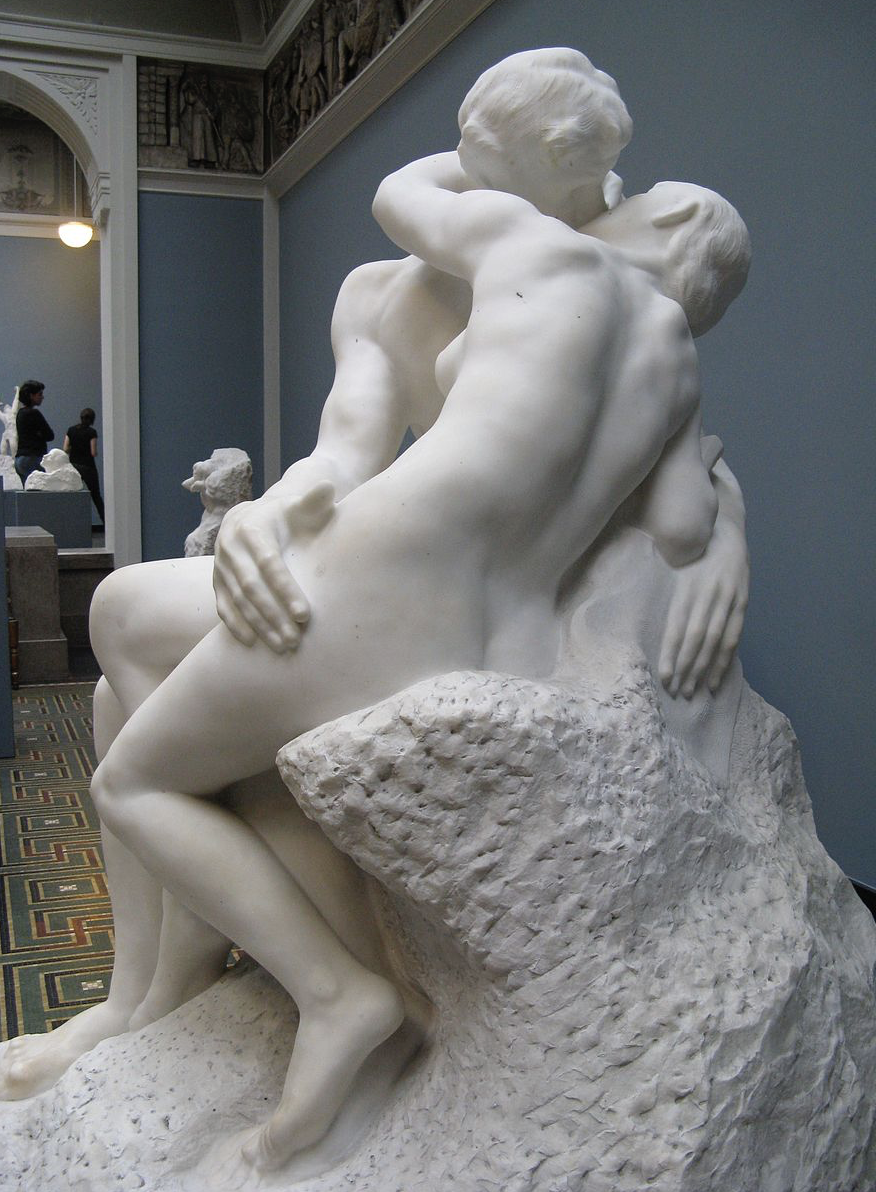
Auguste Rodin, The Kiss, Ny Carlsberg Glyptotek in Copenhagen. Image courtesy of Yair Haklai via Wikimedia Commons
It’s Valentine’s Day, and there is no better way to celebrate the holiday of romance than to highlight a famous sculpture depicting an illicit affair.
The work at the heart of today’s post is Rodin’s The Kiss. This sculpture, created with Rodin’s trademark precision and expressiveness, was inspired by Dante’s Inferno. It portrays two tragic lovers, Paolo and Francesca, locked in a passionate embrace. What makes their love so tragic is that it was doomed from the start: Paolo was Francesca’s academic tutor, and Francesca was engaged to Paolo’s brother. According to Dante’s epic, the pair’s tutoring session began routinely, but went a bit off book after Paolo began to read an Arthurian legend to Francesca. The conquests of King Arthur’s Court did it for the duo, and the physical reaction portrayed by Rodin’s statue was the saucy result.
This was a win for love, but a loss for morality. As a result, Paolo and Francesca were both damned to Hell, where the two suffered for their sins, but remained together even after death.
The Kiss is one of Rodin’s most beloved works, and it caused a stir following its production. This is likely because in 1881, the time of casting, The Real Housewives franchise was not on TV in France. Patrons looked to art for their fix of dramatic scandal and found it in The Kiss.
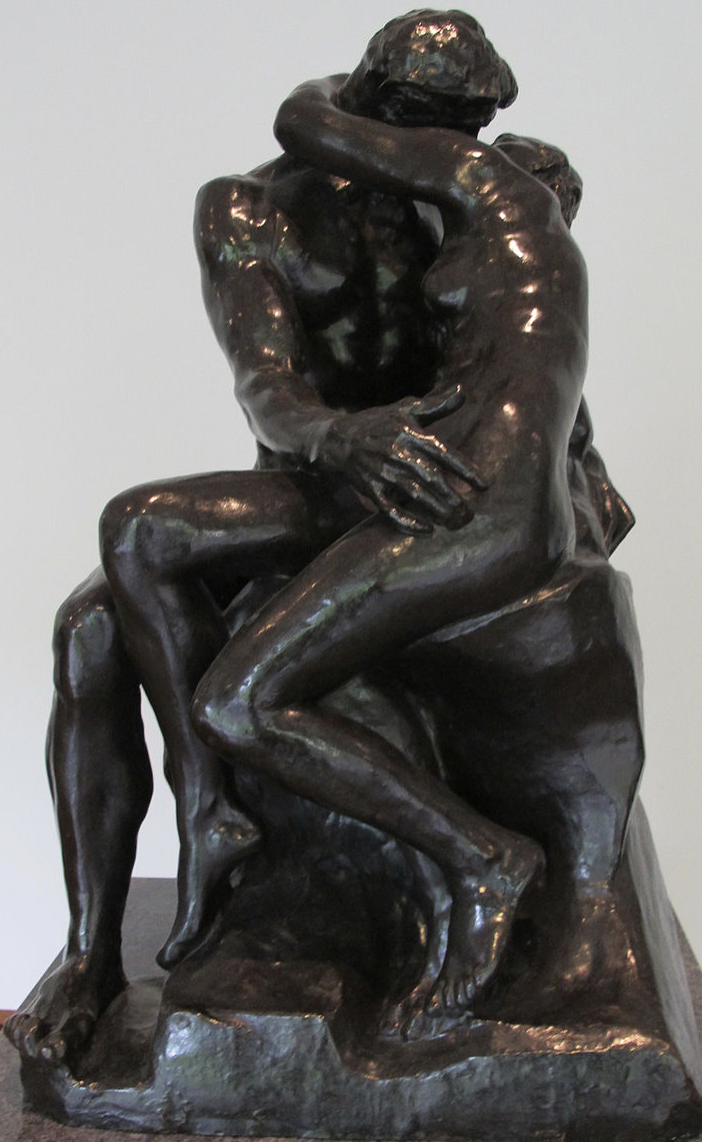
Auguste Rodin (French, 1840-1917): The Kiss, bronze, National Museum of Western Art, Tokyo, Japan, image courtesy of Sailko via Wikimedia Commons
The original sculpture of The Kiss, done in bronze, was created by Rodin as part of a commission by The Decorative Arts Museum in Paris. This museum was never established, but the commission itself ended up producing a fantastic group work by Rodin, including The Kiss. The group work, entitled The Gates of Hell, is a monumental sculpture of Rodin pieces. The Kiss was created as part of this work. However, it was later removed from the larger group and took on a life as a stand-alone piece.
Continuing to set the bar for “relationship goals,” Rodin outdid himself on another set of sculptural figures originating from The Gates of Hell. This next duo is entitled The Eternal Idol. The work shows a woman gazing down upon a man who kneels at her feet in devotion. The lovers made an impression on viewers at the time of creation. Famed poet and author Rainer Maria Rilke, who took cues from Rodin’s creative process in his own work, said of the piece that the work “[a]lways [has] the same enchanting strength. You dare not design a single meaning to it.”
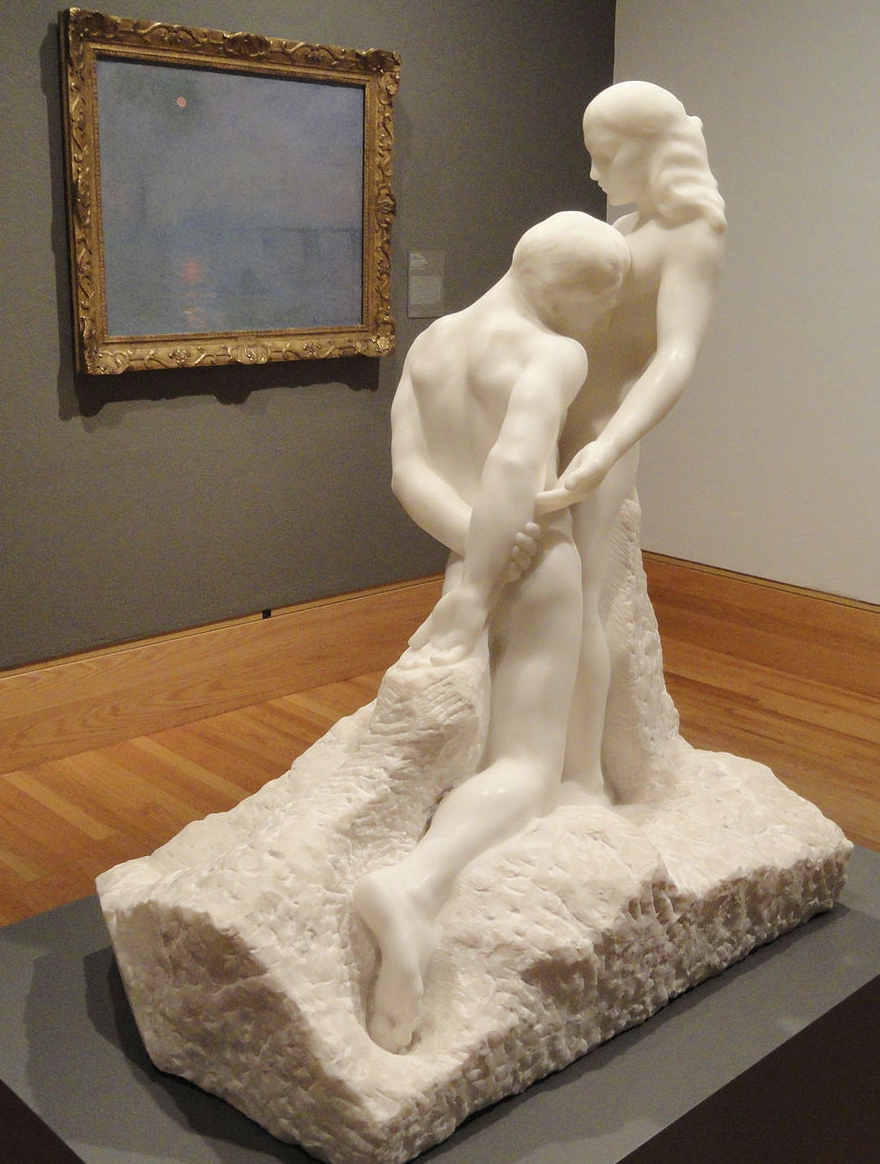
Eternal Idol, executed by Jean Escoula. Exhibit in the Fogg Art Museum, Harvard University, Cambridge, Massachusetts. Image courtesy of Daderot via Wikimedia Commons
While the meaning of the work remains mysterious, art historians have a few good guesses as to who in Rodin’s life inspired the passion portrayed in this work. It is no secret that Rodin often relied on his famous sculptor and colleague Camille as inspiration, model, and muse. The best evidence of the romantic entanglement between the two comes from Rodin’s surviving letters to Camille Claudel. Rodin puts Hallmark to shame in his elaborate prose, writing in 1844 to his muse:
“My very dearest down on both knees before your beautiful body which I embrace.”
Fans of Rodin may have seen a version of The Eternal Idol and The Kiss in real life. In fact, of The Kiss, four large marble versions are known to exist – the three largest being in the Tate Modern in London, The Ny Carlsberg Glyptotek in Copenhagen, and (of course) The Musèe Rodin in Paris. Smaller versions, most commonly cast in bronze, can be found across the globe, including a wonderful bronze casting of The Kiss in the Rodin Court at the North Carolina Museum of Art in Raleigh, NC.
Just how many casts of The Kiss are known to exist? The Barbedienne Foundry alone has produced 319 authentic versions. Of these, only the first twelve are permitted to be called “original editions” under the French law which permits the reproductions. The law in question is the product of a unique aspect of Rodin’s artistic legacy. In his will, Rodin gave French museums permission to cast reproductions of his works after his death. The casts were to be made using either Rodin’s original molds or new molds that were made from his originals.
On the one hand, this means that Rodin’s works are able to be enjoyed and experienced on a broader global scale. On the other hand, this legal twist that permits certain kinds of reproductions – at the exclusion of others – plus Rodin’s worldwide popularity, make Rodin’s sculptures rife for forgery.
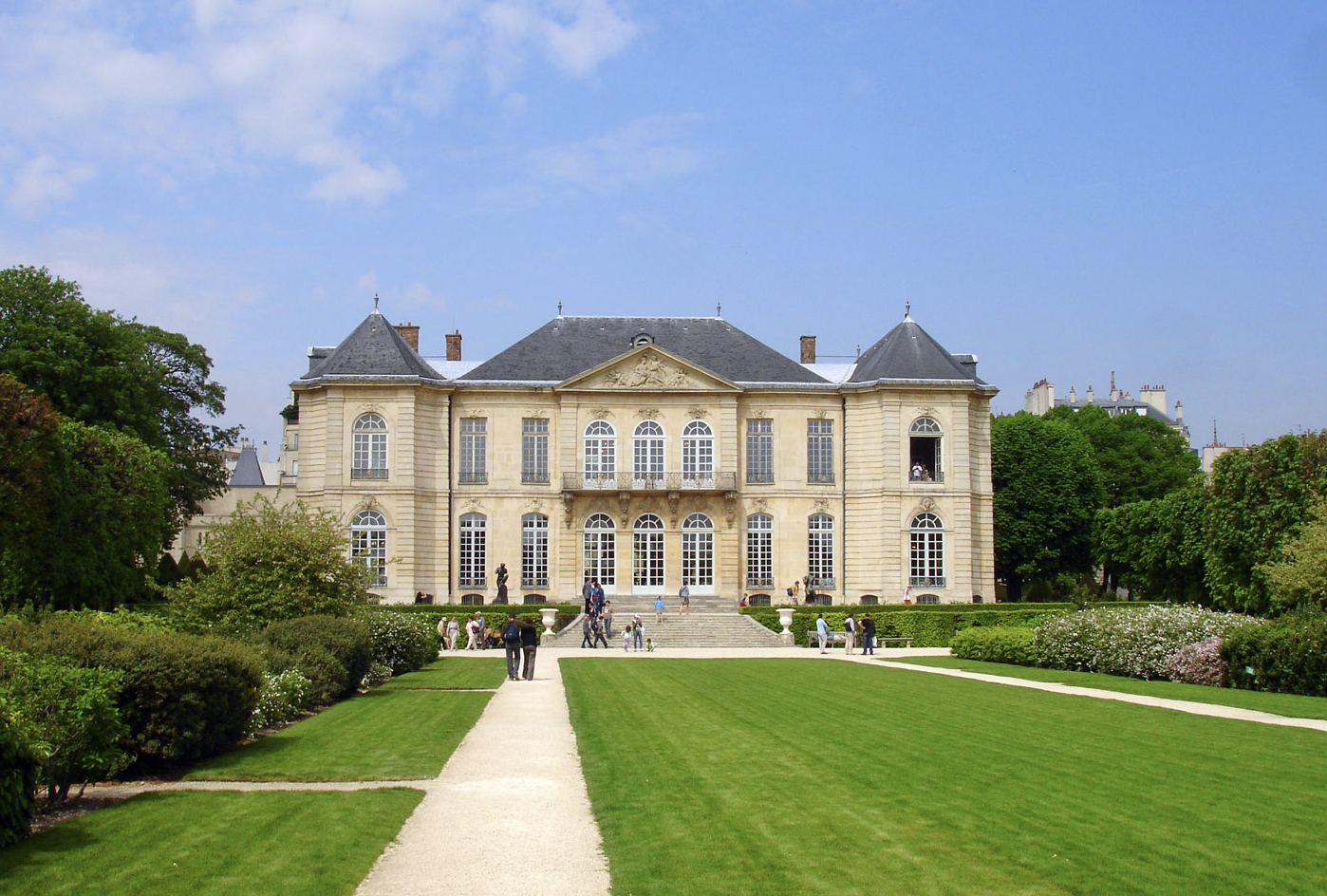
Musée Rodin, Paris. Image courtesy of Michael Scaduto via Wikimedia Commons
A famous example of Rodin copies coming under fire occurred in 2019, at the conclusion of a nearly two-decade legal controversy involving two art dealers, American Gary Snell and Frenchman Robert Crouzet. According to the court documents, Snell had cast upwards of 1,700 Rodin sculptures – a remarkable amount for one dealer. To make each sculpture, Snell used one of the sixteen molds illegally passed along to him by Crouzet. The alleged total sale price of the sculptures the pair sold amounted to over $72 million.
Snell and Crouzet might have been able to avoid prosecution for their reproductions, had they complied with the French law. For example, if Snell had made it clear to buyers that the reproductions were – in fact – reproductions, and not authentic Rodins, both Snell and Crouzet may have avoided liability. But because Snell failed to make it clear to buyers that they were buying reproductions, and not official copies, he and Crouzet both faced sentencing by the French State.
Several factors exacerbated the duo’s complicity, including the fact that some works included a forged Rodin signature. Many copies also included forged authentication documents from the official French foundry, the Founderie Rudier. Moreover, several of Snell’s copies departed from Rodin’s exact molds, creating sculptures that were slightly distorted. Snell was not a sympathetic plaintiff. He complained that if he had made it clear to buyers that he was selling unofficial reproductions, he likely would not have been able to charge as much per statue. Not to be outdone, his lawyer blurted out to the court that this lawsuit had “totally ruined” his client’s livelihood as an art dealer.
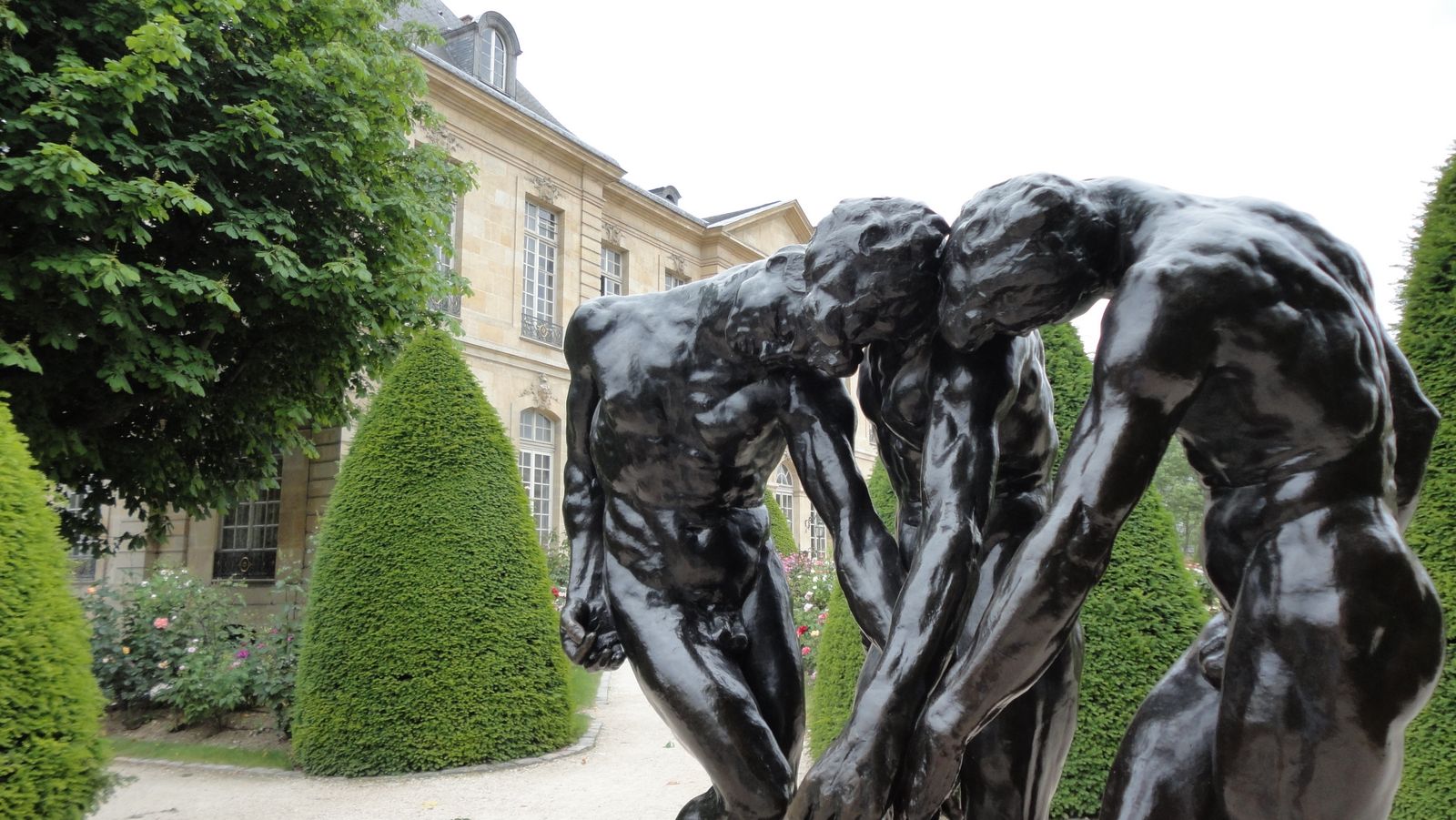
Rodin Museum, Paris
Copyright: Leila A. Amineddoleh
Such protestations did not result in a lot of love for Snell, Crouzet, or their attorneys. What is there to be said? The French State loves Rodin and will stop at nothing to protect and ensure the authenticity of the artist’s rich legacy. This level of devotion deserves a French kiss. However, in order to avoid a repeat of Dante’s ill-fated lovers, aim to make it Hershey’s.